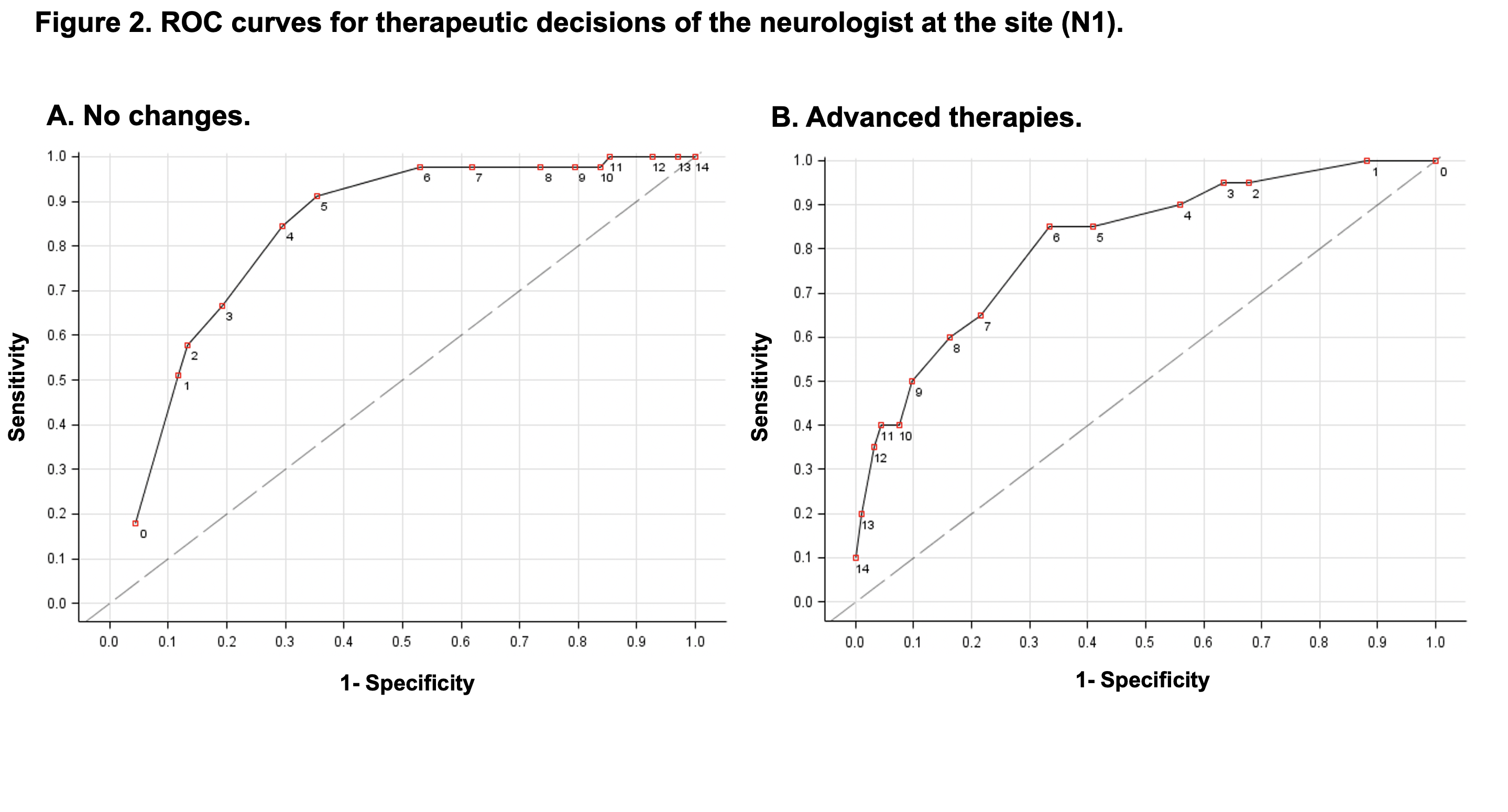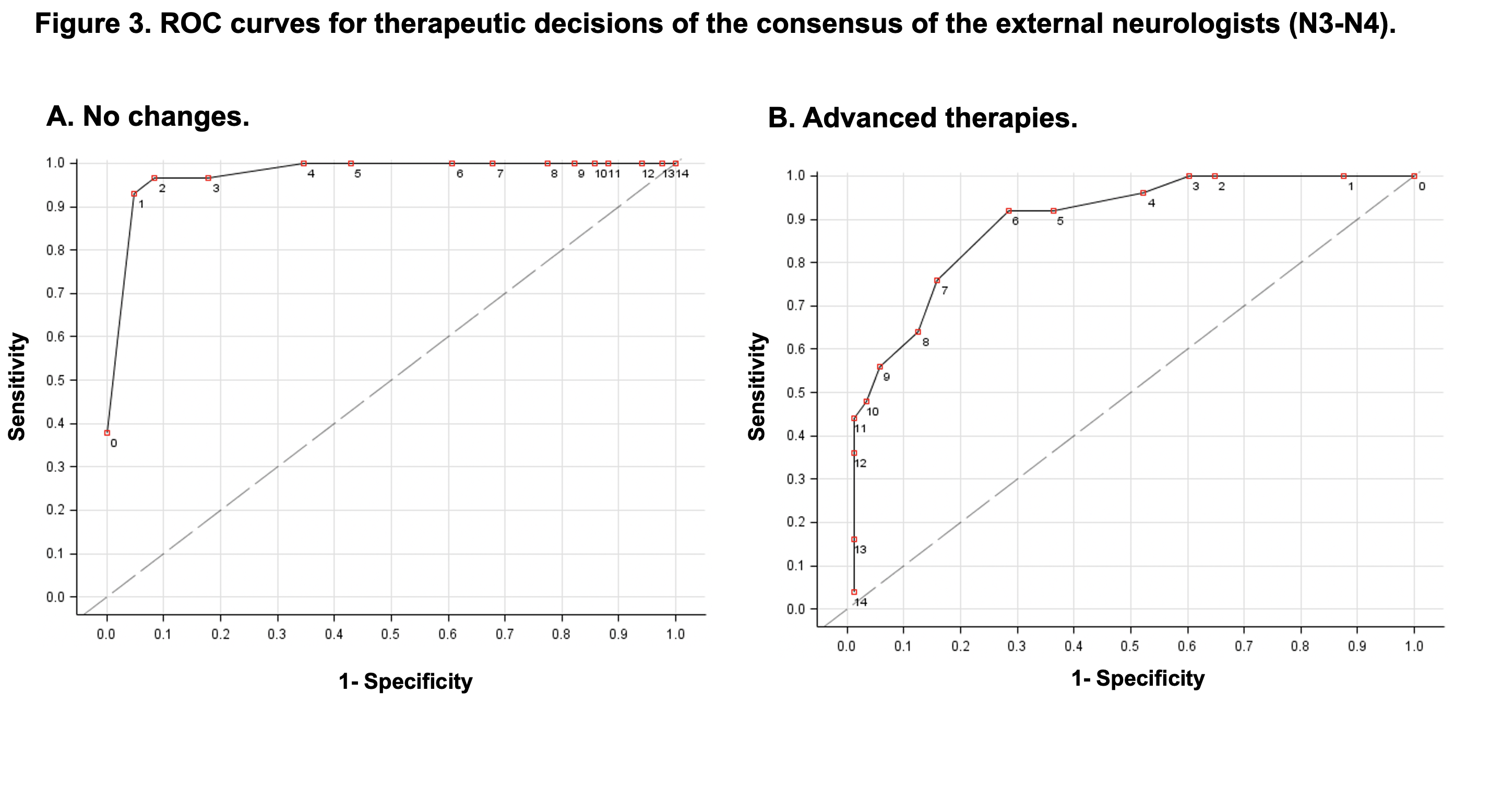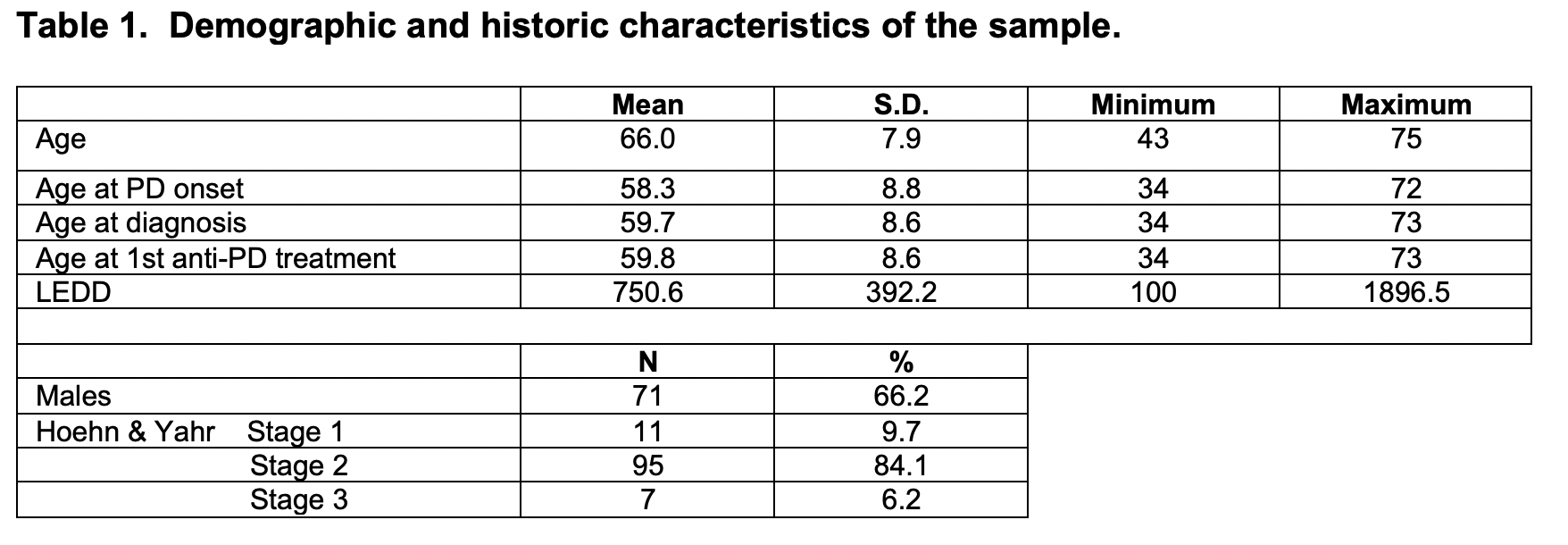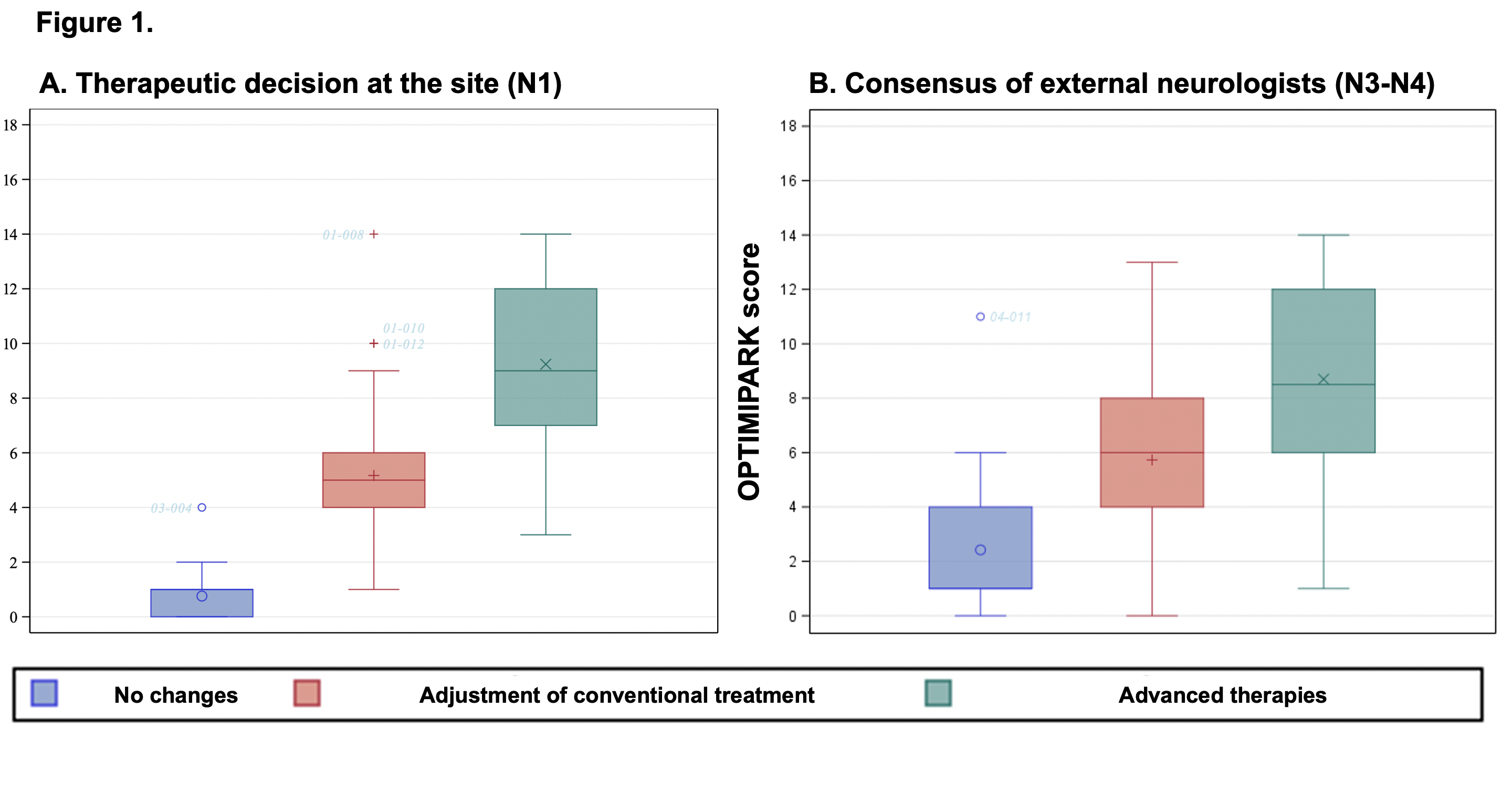Objective: To validate the OPTIMIPARK questionnaire as a tool to help the clinician in the adjustment of dopaminergic treatment in Parkinson´s disease(PD).
Background: At early and mid-stages of PD dopamine replacement therapy reduces most motor and non-motor features.1 As dopamine loss progresses, treatment should be raised and advanced therapies might be considered.1
Method: We tested a questionnaire including nine items encompassing motor and non-motor complications as well as disability. Each item is scored according to severity; none(0),mild-moderate(1) or severe(2). Patients answered OPTIMIPARK in a multicenter, observational, cross-sectional study. In each site, a neurologist (N1) assessed the patients according to regular clinical practice and blinded to OPTIMIPARK. Therapeutic decisions were classified as “no changes”, “adjustments in conventional drugs” and “advanced therapies”. Two external neurologists (N3/N4) only aware of patient´s age, years of disease and current treatment chose a therapeutic decision based on patient´s answers to OPTIMIPARK. They also reached a consensus for every case. The concordance between the criterion of the N1 at the sites vs. the criterion of each external neurologist (N3/N4), the consensus (N3-N4), and among them (N3 vs. N4) were analyzed applying weighted kappa(Kw, with quadratic weights). ROC curves were calculated to establish cut-off points for OPTIMIPARK total score for every therapeutic decision, both according to N1 and the consensus criterion.
Results: 113 PD patients were included(Table 1). Therapeutic decisions according to N1 and external neurologists are shown in Table 2. Concordance between N1 and external neurologists was moderate whilst concordance among N3-N4 was high(Table 2). Figure 1 shows OPTIMIPARK scores for each therapeutic decision upon N1 and N3-N4 criterion. Figure 2 and 3 show ROC curves for the “no changes” and “advanced therapies” decision according to both the N1 and N3-N4 criterion. OPTIMIPARK score <3 and >7 showed adequate sensitivity and specificity to identify patients with no need for adjustment and potential candidates for advanced therapies respectively.
Conclusion: As previously noticed with other questionnaires, OPTIMIPARK might be more sensitive than regular clinical practice to suggest the need of a therapeutic change. Further, low and high scores identify with high accuracy patients well-adjusted and candidates to advanced therapy respectively.
References: 1. Poewe W, Seppi K, Tanner CM, Halliday GM, Brundin P, Volkmann J, et al. Parkinson disease. Nat Rev Dis Primers. 2017, 3:17013.
To cite this abstract in AMA style:
J. Máñez-Miró, F. Vivancos-Matellano, L. Vela-Desojo, R. Martinez-Fernandez, F. Alonso-Frech, N. Lopez-Aristegui, E. Balaguer-Martínez, J. Martinez-Castrillo, L. Lopez-Manzanares, P. Martínez-Martín. OPTIMIPARK Questionnaire:a tool to optimize treatment in Parkinson´s disease. [abstract]. Mov Disord. 2021; 36 (suppl 1). https://www.mdsabstracts.org/abstract/optimipark-questionnairea-tool-to-optimize-treatment-in-parkinsons-disease/. Accessed December 21, 2025.« Back to MDS Virtual Congress 2021
MDS Abstracts - https://www.mdsabstracts.org/abstract/optimipark-questionnairea-tool-to-optimize-treatment-in-parkinsons-disease/





